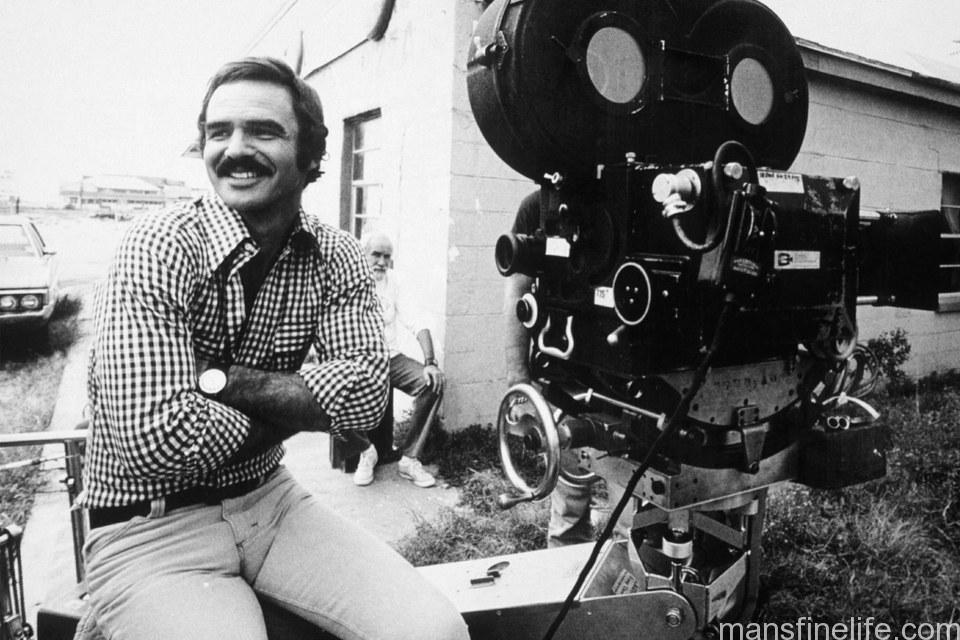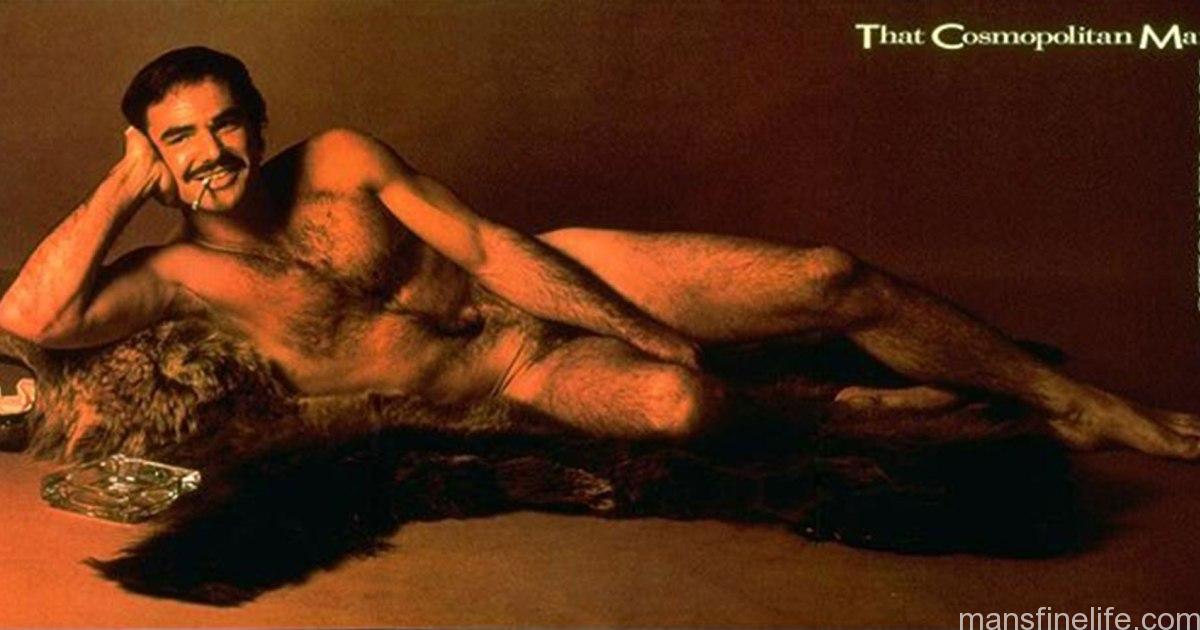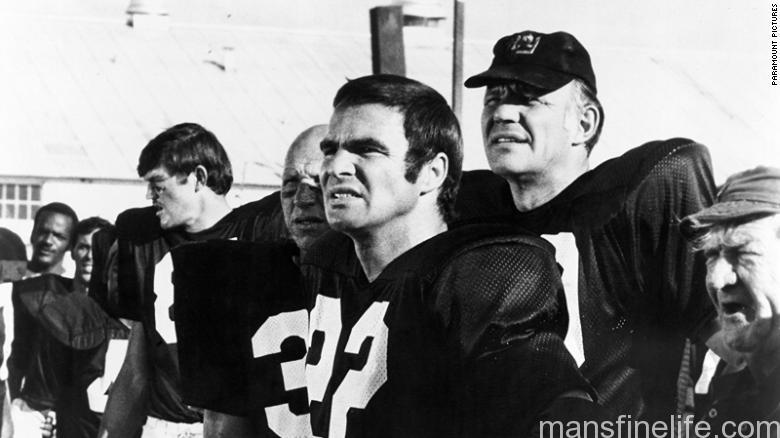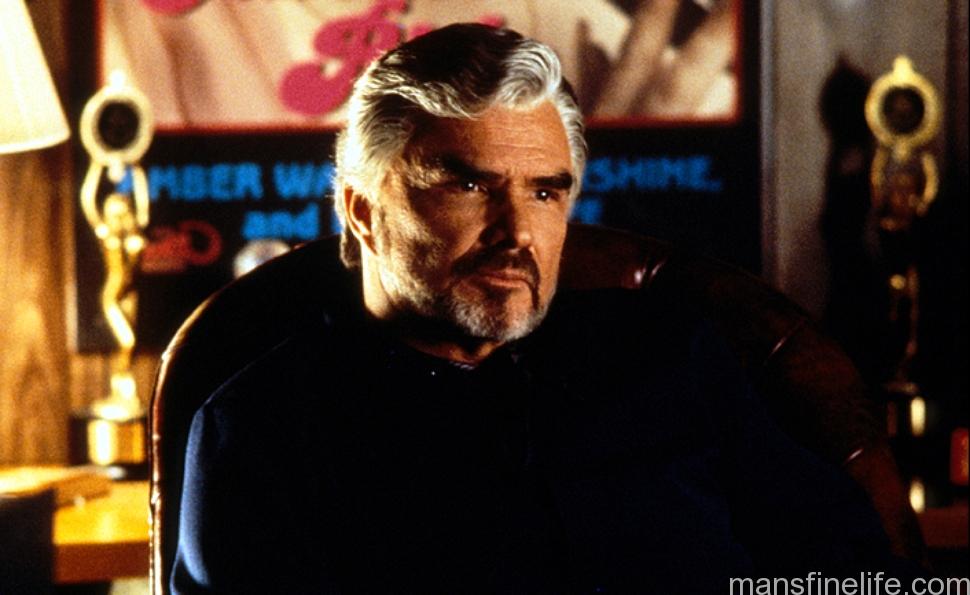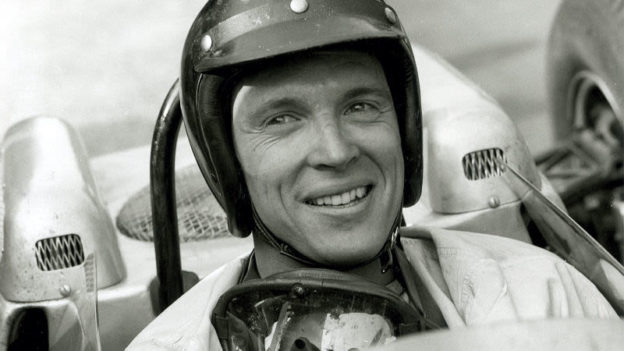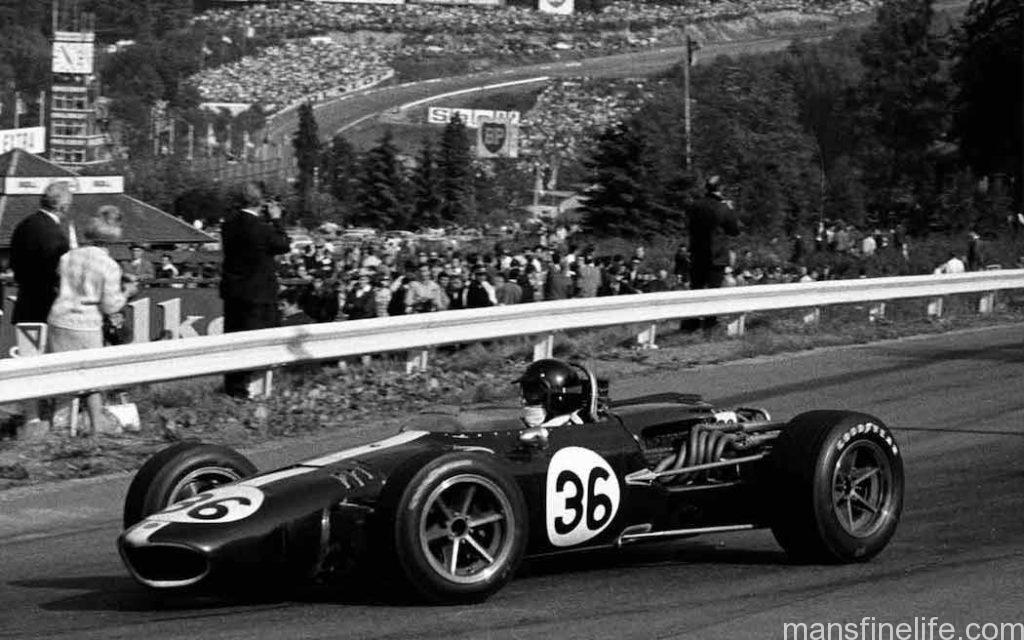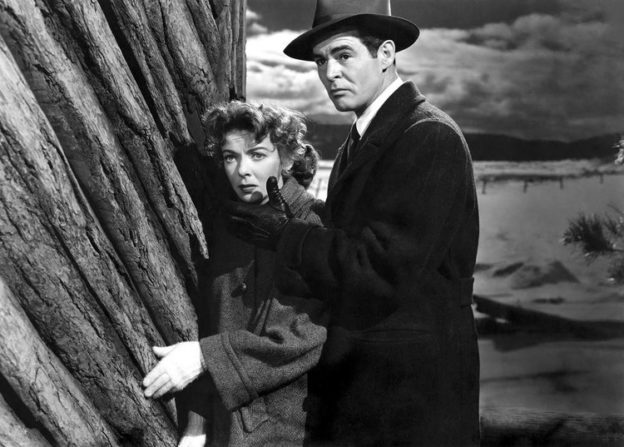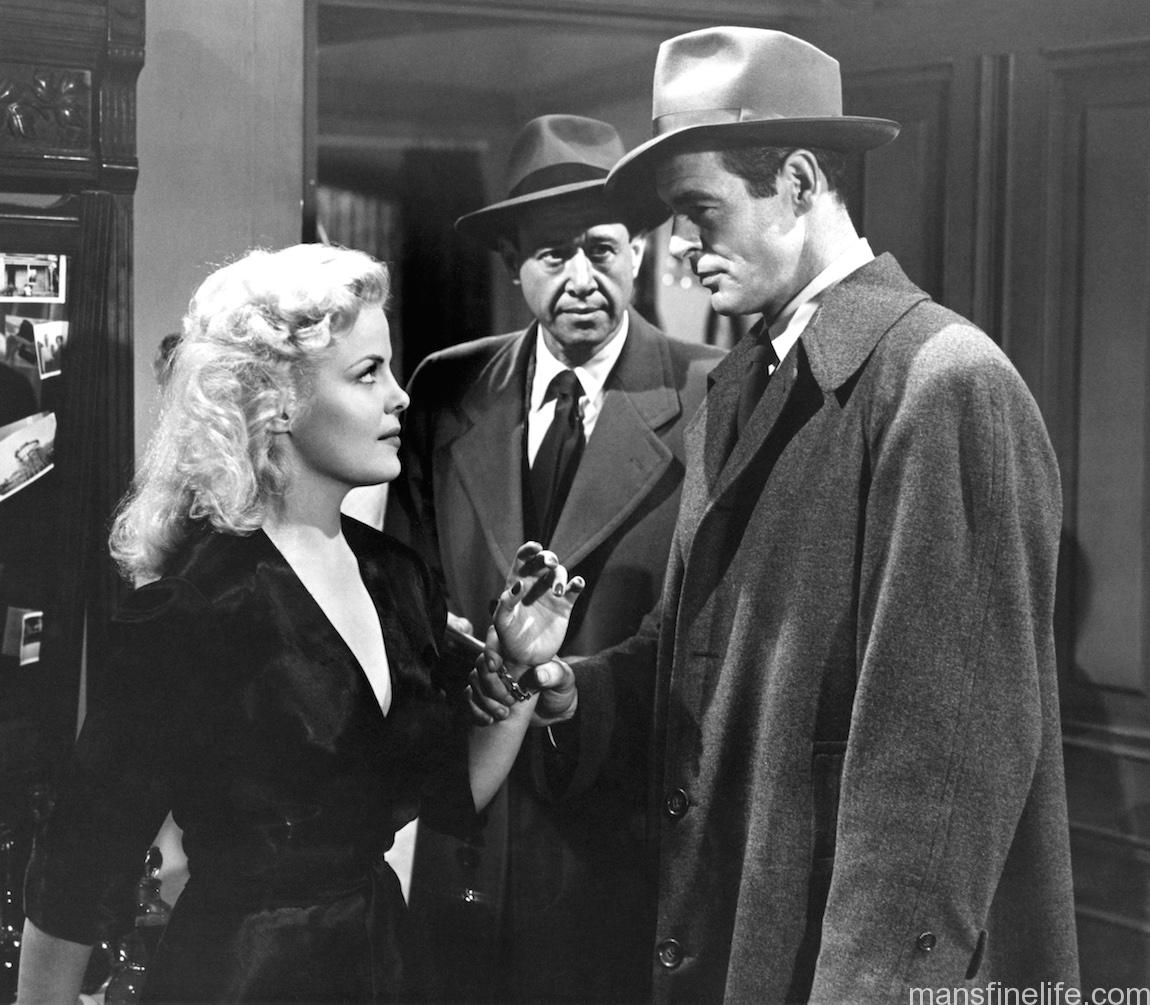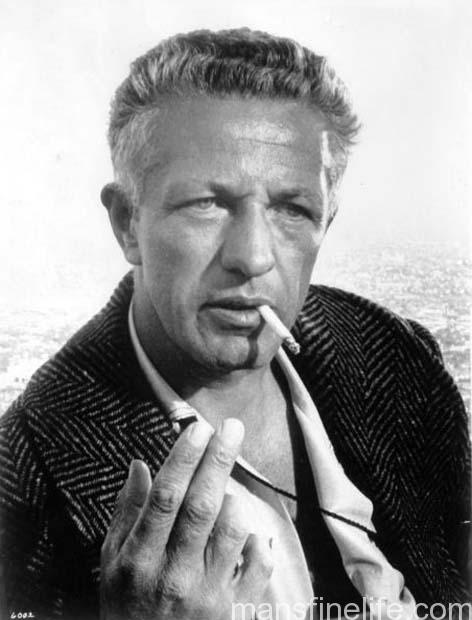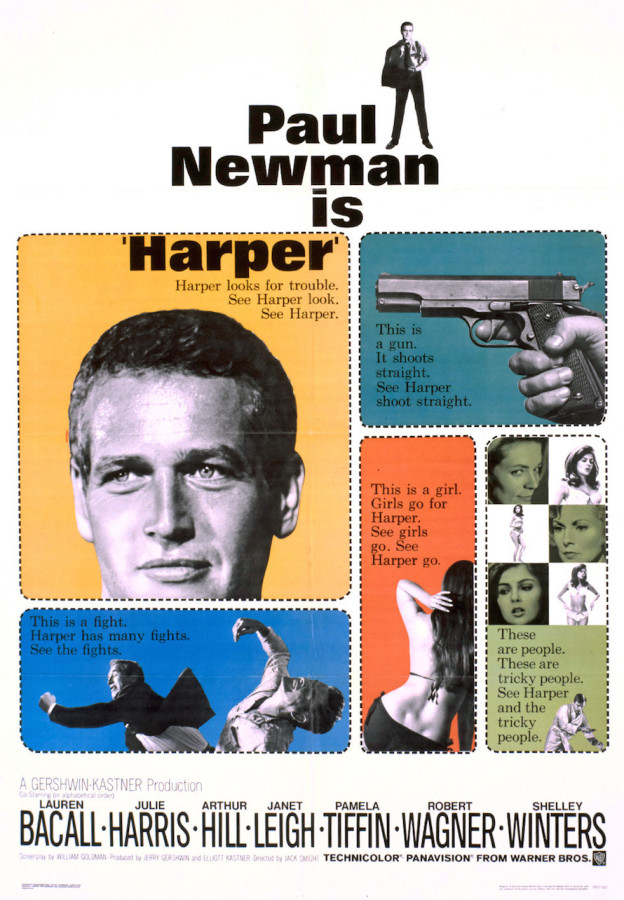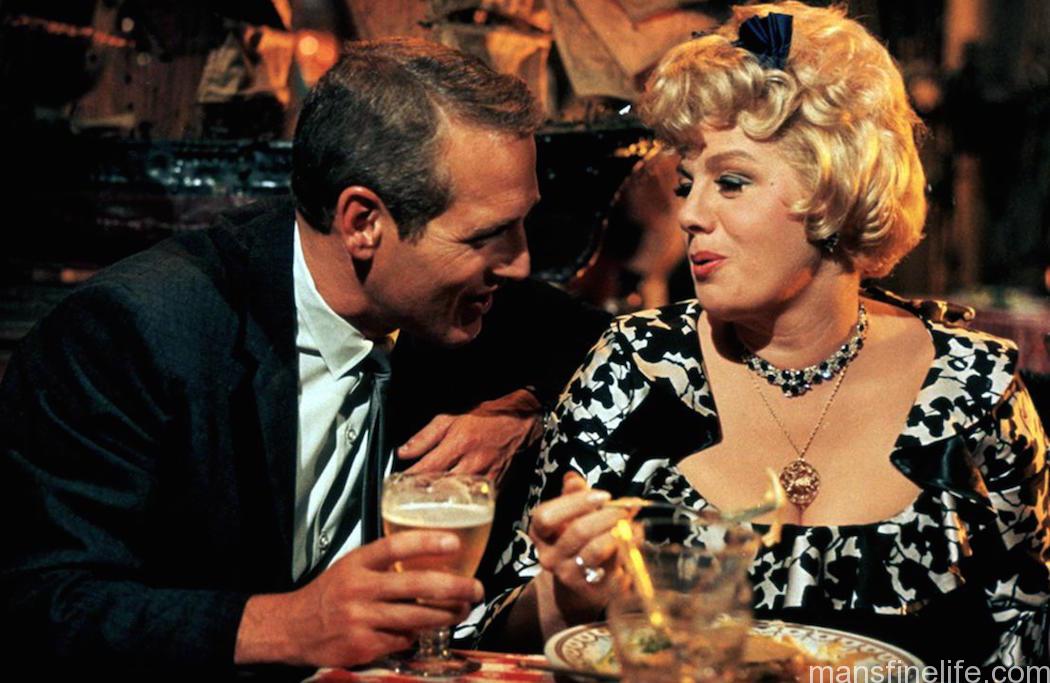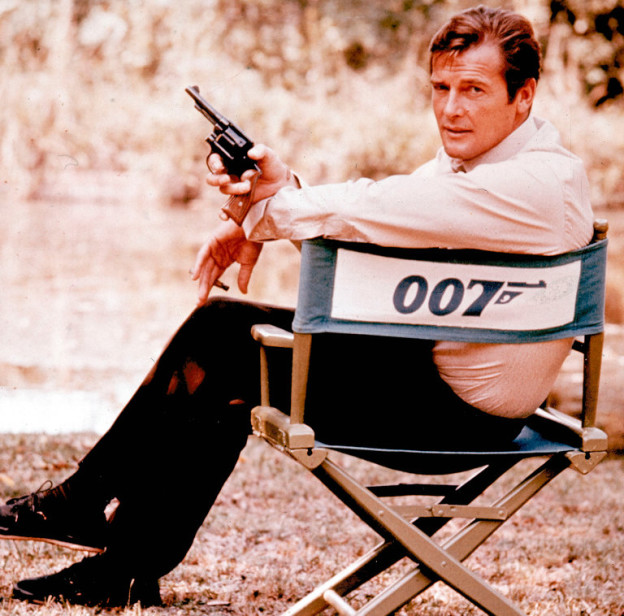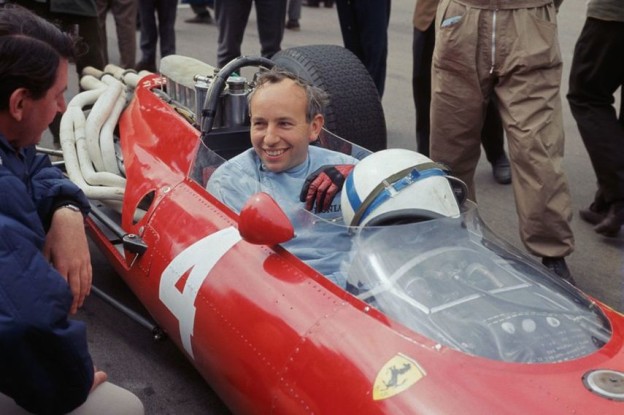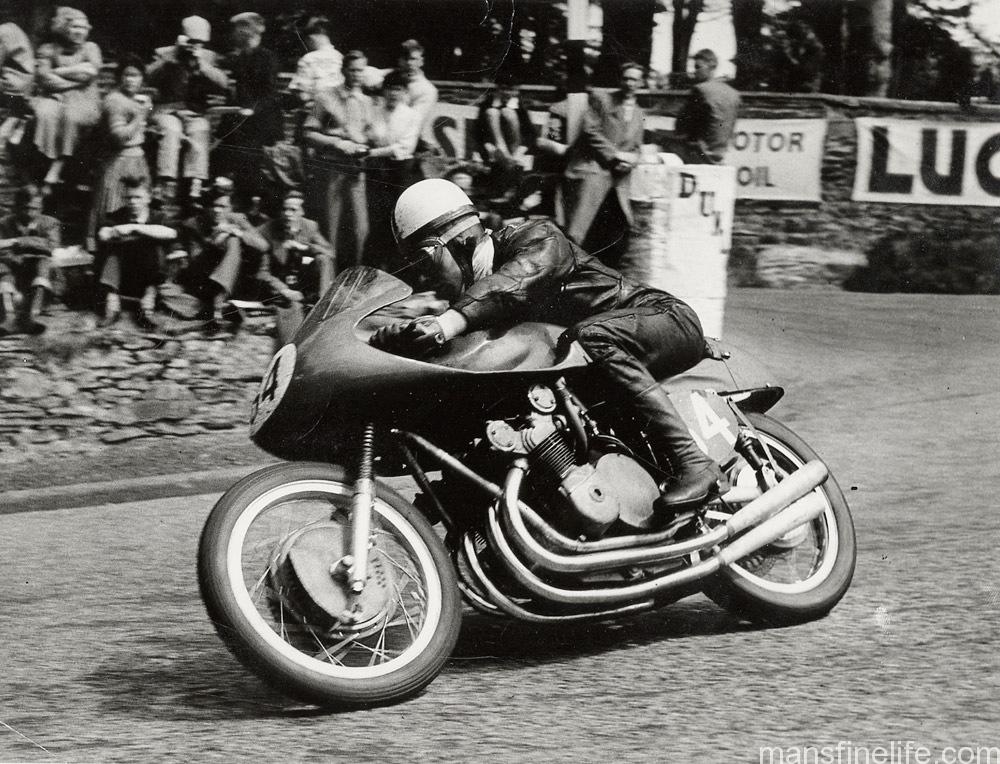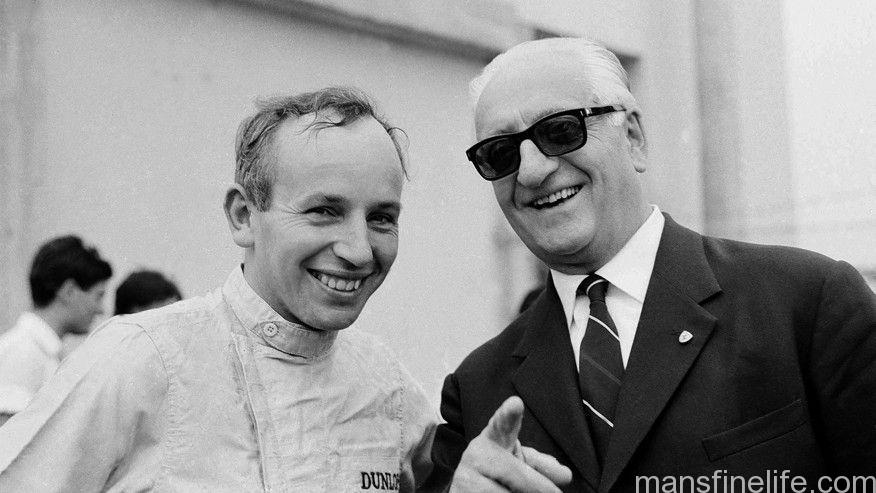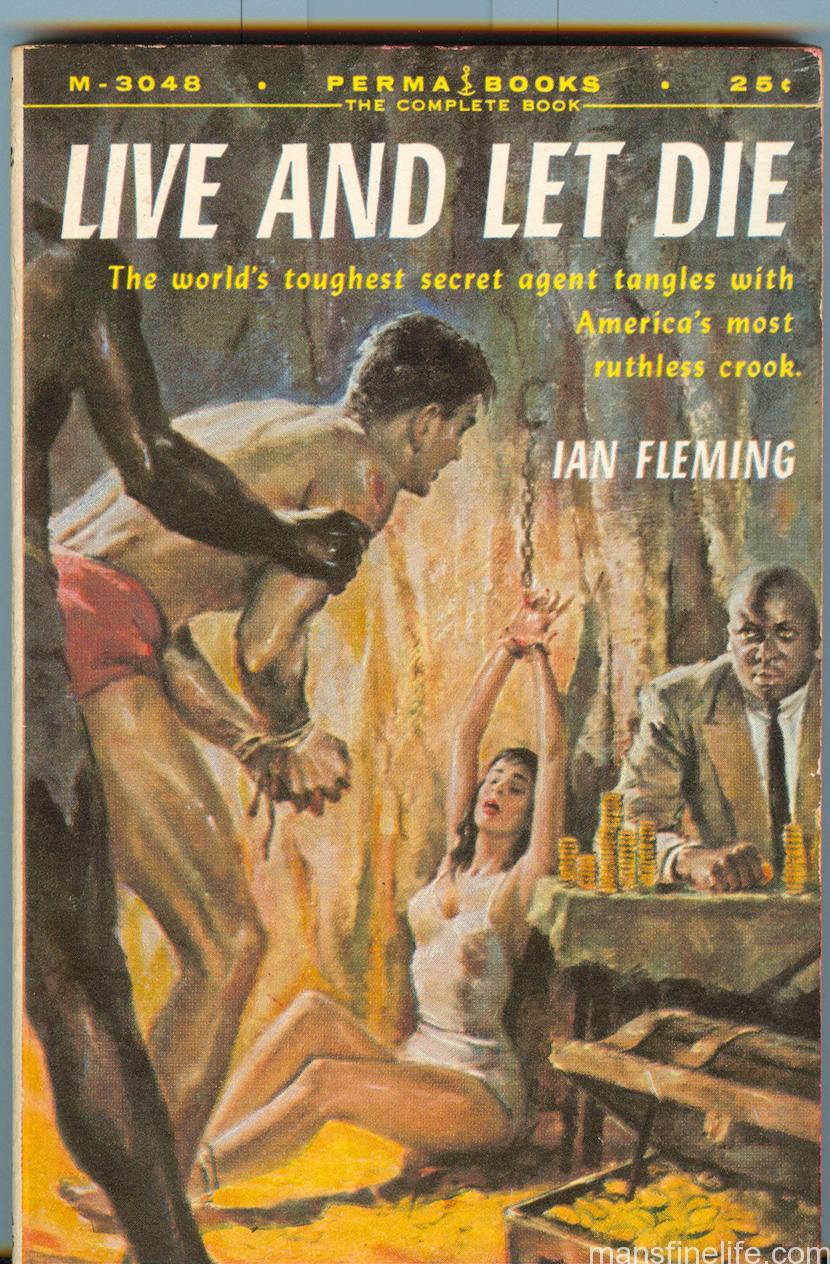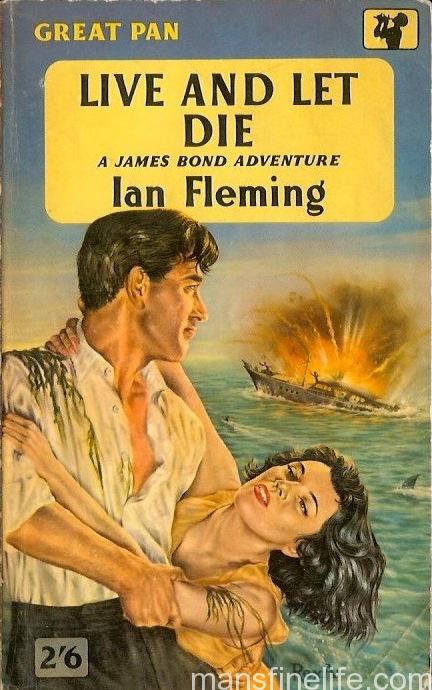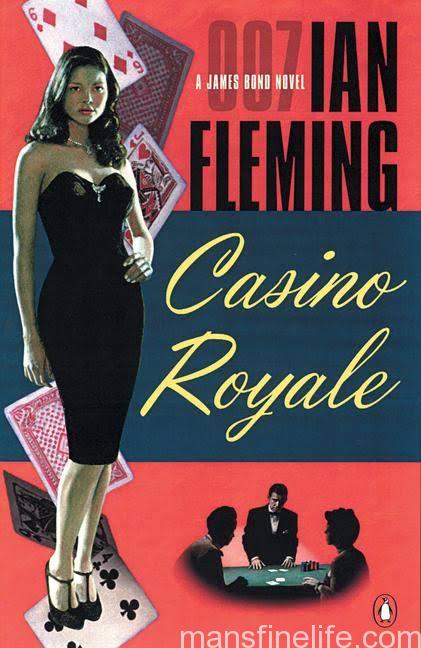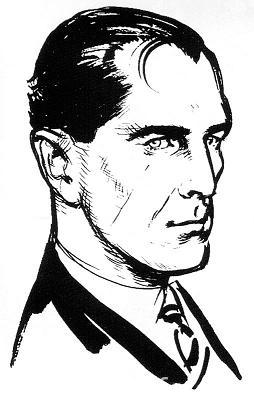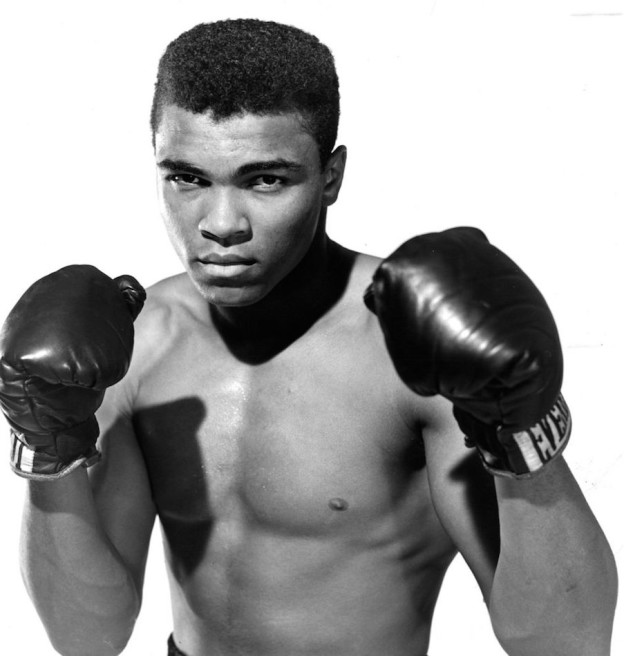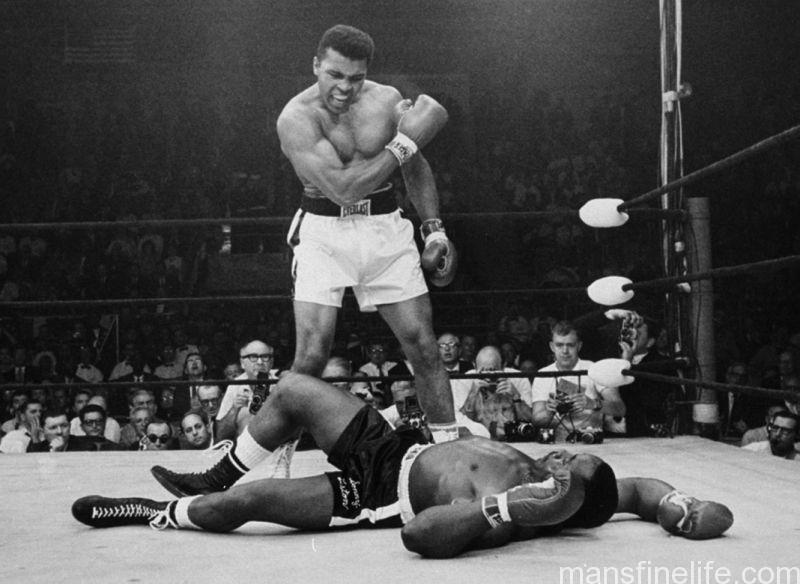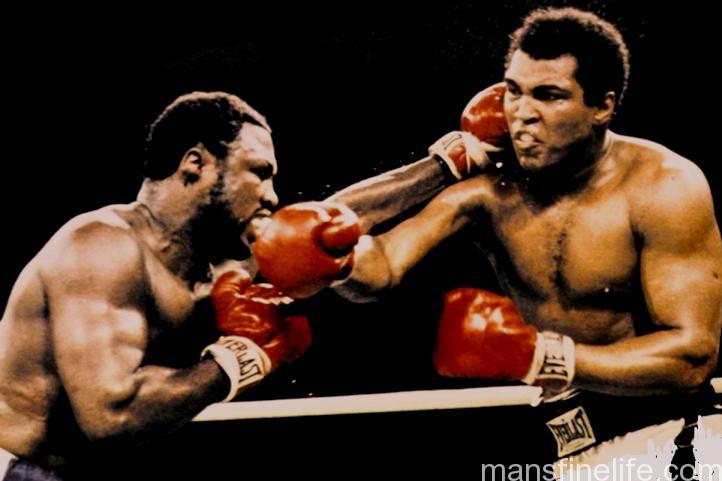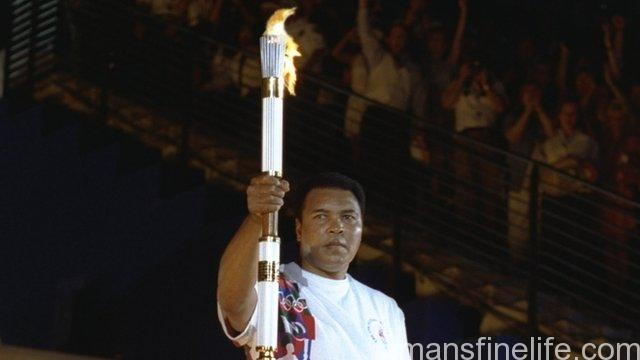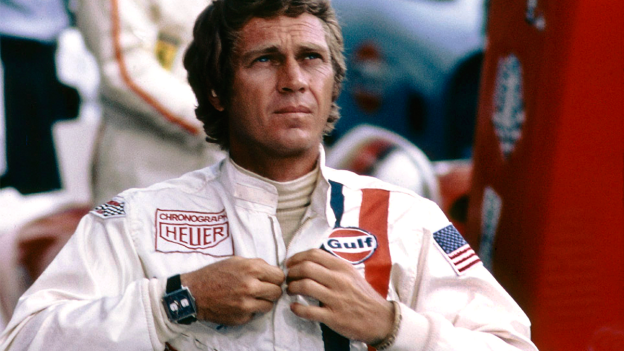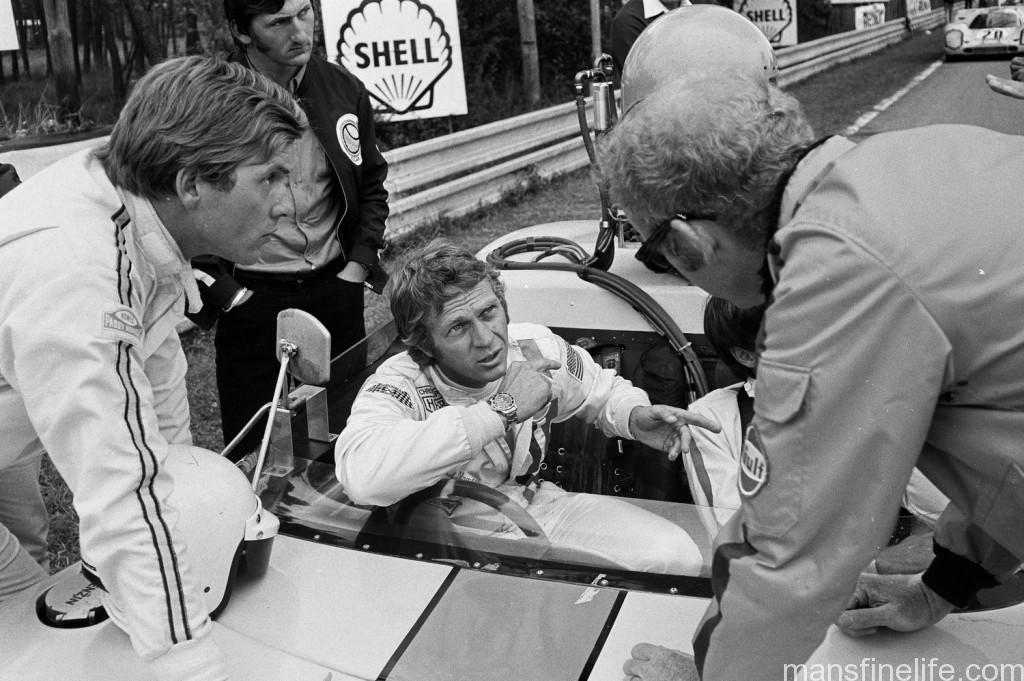The death of Burt Reynolds at the age of 82 a few weeks ago has been a real bummer. Burt was one of our heroes here at MFL, so much so that no one could bring themselves to write the tribute. Looks like I drew the short straw…
If you grew up in the 1970s or ’80s Burt Reynolds was about as close to a vicarious favorite uncle as you could get. With his swagger, hairy chest and mustache, not to mention a varying assortment of ever-changing custom toupees, Reynolds dominated the box office through a series of increasingly Dixie-centric action films that featured fast cars, hot & spicy women and real stunts. If the plots were a little less than Mensa-level they were redeemed by Reynolds’ knowingly wry performances, bemusedly observing some of the more ridiculous antics in a self-depricatingly humorous way that rarely failed to connect with his audiences. All Burt had to do was let out one of those high, hyena-like laughs and you knew that he was having as much fun making the movie as you were watching it.
Reynolds had a very long career and was already a known, working actor in the 1960s and at the dawn of the ’70s, with prominent parts on TV in Riverboat and Gunsmoke leading to title roles on the short-lived police dramas Hawk and Dan August. Somewhat burdened by his physical resemblance to Marlon Brando in his early career it took his performance as a macho businessman on a rafting holiday gone horribly wrong in 1972’s Deliverance to sear a distinct screen identity into the national culture and catapult Reynolds to the top of the Hollywood A-list. That role cleverly exploited the limits of the self-styled man of action when faced with uncontrollable circumstances and the shifting nature of the alpha-male within a small group under siege. The film itself, directed by that keen observer of male codes and primitivism, John Boorman, has gone down as one of the all-time classics, if a grim one. As if to undercut the somberness of his career-defining role in Deliverance, Reynolds became equally famous that year for posing semi-nude on a bearskin rug in Cosmopolitan magazine. Although he never failed to mention how much he regretted the publicity stunt even in the last interviews of his life there is no doubt that it gave a major boost his overall popularity if not his standing as a serious actor (and if he regretted it so much why did he also put out a risqué paperback called “Hot Line” that featured him bottomless in a football jersey among other playful beefcake photos?). His Cosmo centerfold in all its hirsute glory became one of the most iconic and subversive images of the ’70s, right up there with Joe Namath posing in pantyhose.
That was always the yin-yang with Burt Reynolds. He was the ultimate crowd pleaser but yearned to be taken seriously, capable of expounding on his personal foibles in unvarnished detail and then prowling around a studio audience of middle-aged ladies like a sex panther. Beginning with White Lightning (1973) and then its sequel Gator (1976), the first film he directed, Reynolds perfected the reliable screen persona of a good old boy out to stick it to the man, one that drew on his southern roots and proved enormously appealing to moviegoers both above but especially below the Mason-Dixon line. This character and formula found its apotheosis in the immensely successful Smokey and the Bandit, which was second only to Star Wars in 1977 box office gross receipts. Smokey and the Bandit brilliantly tweaked the Reynolds man-of-action character with a more comic slapstick approach and fused it with a host of ’70s zeitgeist touchstones like trucker CB culture, contraband Coors beer, Jerry Reed’s killer theme song “Eastbound and Down,” a feisty young Sally Field and Burt’s black and gold T-top Trans Am all while being pursued by a fat, tan and uproariously foul Jackie Gleason. But enjoyable as his redneck gearhead protagonists were, Reynolds most interesting work was often in more challenging and uncategorizable movies, parts more in the Deliverance vein that were propelled by some inner hurt within Burt that he worked so hard to gloss over most of the time.
He was particularly productive with director Robert Aldrich, another keen observer of flawed macho behavior, with the morally ambiguous and very moody L.A. neo-noir Hustle (1975) and even better as the footballer behind bars in The Longest Yard (1974). His Paul “Wrecking” Crewe in Yard is one the best roles Burt ever had, funny, cocky, sensitive and rebellious in all the best ways, outwitting the guards and a corrupt warden by whipping his misfit cons into a cohesive football team and cleverly finessing a seemingly no-win situation. His background as a serious amateur ballplayer was put to good use again in Michael Ritchie’s Semi-Tough (1977) alongside Kris Kristofferson and Jill Clayburgh in a very funny and very ’70s send up of football, its wealthy patrons and the patently ridiculous self-realization craze of the time. Other notable films of this era are Hooper & The Cannonball Run, more antic action frolics helmed by Bandit director and Reynolds’ pal Hal Needham, the ace stuntman & his former housemate; and The End directed by Burt about a man with a terminal prognosis determined to end it all in ineffectively hilarious fashion with the unwanted and homicidally zealous aid of Burt’s frequent sidekick during this era, Dom DeLuise.
Despite the star-studded guilty pleasure success of Cannonball Run, Burt was essentially running both the car chase genre and his grinning good ol’ boy persona into the ground due to a series of weak sequels — Cannonball Run II, Smokey and the Bandit II & III — finally bottoming out with the poorly received Needham-helmed stock car farce Stroker Ace in 1983. He had ridden this particular wave as far as the public wanted it to go and it had broken. He had also tried diversifying his screen persona with relationship comedies like Paternity (1981) and the very good Starting Over (1979). And he also explored relatively humorless tough-as-nails cops in the Clint Eastwood vein in crime thrillers like Sharky’s Machine (1981) and Stick (1985), both of which he also directed, as well as the rather more tepid Heat (1985). But even though those films hold up well now for the most part the reception at the time was decidedly mixed. The public was suffering from Burt Reynolds fatigue.
Worse still for Burt he was injured during the making of the Prohibition period pic, City Heat (1984), in which he co-starred with Eastwood himself on something of a Hollywood macho man action star dream team. His laudible penchant for performing as many of his own stunts as the insurance companies would allow, which earned him tremendous respect from the stunt man community, boomeranged on him when he was accidentally hit in the face with a non-prop chair, shattering his jaw. His recuperation would see him drop a scary amount of weight, leading to ugly rumors, and a debilitating dependance on sleeping & pain pills, which unfortunately would recur later in life. But he came back strong on the small screen with an appealing homage to small-town life, Evening Shade (1990-94), which won Burt an Emmy. Better yet was his auteur director of smut Jack Horner, adult entertainment impresario and surrogate father figure to a group of misfits in the porn industry, in Paul Thomas Anderson’s epic Boogie Nights (1997). It was perhaps his best acting since the early to mid-1970s, a fully realized portrait of an honorable man with artistic leanings in a scuzzy business, a professional with X-rated standards who resists the move to cheap, plotless videotaped carnality performed by amateurs and serves as the protector and enabler of his porn family’s dreams. It was a stunningly rich performance with a palpable backstory that not only earned him an Oscar nomination but also newfound respect in the industry for his acting chops.
His bewildering reaction to the success of Boogie Nights illustrated the conflicts raging beneath the surface of this seemingly glib stud. Despite its critical success Burt disowned Boogie Nights, claiming never to have seen it straight through. He feuded with prodigy director Anderson, although it seemed like a one-sided grudge as Anderson was willing to cast him in his next picture, Magnolia. But Reynolds turned him down. It’s unclear whether Reynolds didn’t really understand Boogie Nights, not only one of the best films of the ’90s but certainly one of the best performances of his career, or simply found the end product distasteful. But, like his reaction to the Cosmo centerfold that came on the heels of his breakthrough in Deliverance, Reynolds seemed intent on undercutting one of his greatest successes with needless public second-guessing and airing his discontentments. It was as if within the man there was an unresolvable conflict between being taken seriously as an actor to earn the respect of his peers and the absolute need to subvert that potentially pretentious goal by treating so much of his work as a series of mistakes or purely mercenary undertakings, often even the good stuff. His loudly professed dislike of Boogie Nights cemented his reputation as a difficult star to work with and short-circuited his comeback. Perhaps it even cost his that year’s Oscar. Along with his epically complicated relationships with women, including Dinah Shore, Sally Field and Loni Anderson, it all pointed to a strangely restless and unsatisfiable soul.
But in his best work on the screen — and in hours of old talk show clips still viewable on You Tube — Burt channeled those deep waters into the pursuit of having the best possible time, inviting the audience along with him for the ride and letting them in on the jokes like a lucky passenger in that famous speeding black and gold Trans Am. His physicality and daring were perfectly suited to action romps but behind the mustache and hairy chest was also the deft touch of an expert light comedian, a nearly unique combination in such a macho dude perhaps only paralleled during that era by the sly Roger Moore in a suave English version (and with some echoes today in Ryan Reynolds’ impressively deft action-comedy performances). He successfully escaped the massive shadows of Brando and Eastwood to create an entirely unique screen persona, self-mocking but capable, tough but romantic, anti-establishment but with his own code of honor, always a faithful friend. He was, above all, an absolute charmer, as self-effacing and yet as confident in his excellence and good looks as a Southern 1970s Cary Grant, the cackling laugh substituting for Grant’s untraceable accent. Like Grant, he was massively complex in real life, often dissatisfied and full of self-doubt. But in front of the camera he was a master and a “natural” by way of hard work and experience. To ponder all the happiness Burt Reynolds leaves behind through his extraordinary and prolific career, the omnipresent drive-in movie and videotape/cable TV background for those of us who came of age in the ’70s and ’80s, is precisely why his passing leaves us so bereft. There are a ton of Burt Reynolds movies out there to continue to watch and enjoy. But to think that he will never make another, never laugh that hyena laugh again while he burns out and outfoxes the law is more than a little bit sad. It’s more like losing a wry older friend from childhood and a masculine role model than simply another movie star. But isn’t that the mark of this special man and his particular quality of stardom? Adios and via con dios, Burt — you were always a great amigo.






